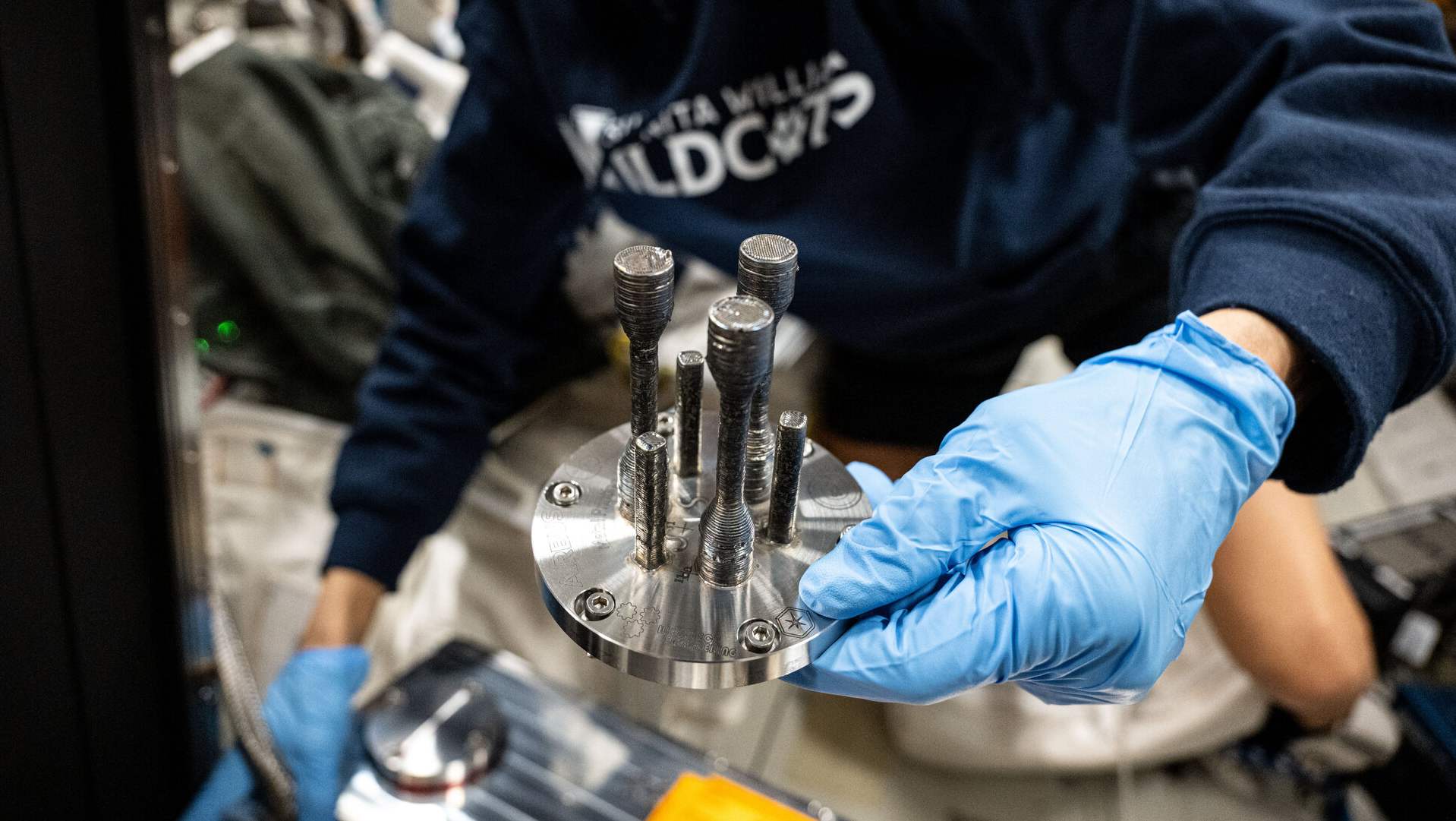
Scientists on the International Space Station (ISS) have successfully 3D printed a metal part in space - an out-of-this-world first. The achievement is significant, as this 3D fabrication capability is thought to be key for the success of future long-duration missions. Numerous challenges were overcome by the team from the European Space Agency (ESA) to achieve metal in-orbit manufacturing capabilities. The four metal 3D printed components that the scientists plan to make will be returning to earth for thorough quality testing.
The device behind this feat is ESA's own Metal 3D Printer, described as a technology demonstrator. It was built by Airbus and its partners. However, the important work of "designing the printer's melting process and hardware, as well as its laser source, delivery optics, feedstock storage, and feeding system," was undertaken at Cranfield University in the UK, says the ESA press release.
At the start of the year, the ESA Metal 3D Printer was launched to the ISS, and ESA astronaut Andreas Mogensen subsequently installed the payload. The first successful 3D print of a metal component took place in August.
"With the printing of the first metal 3D shape in space, ESA Exploration teams have achieved a significant milestone in establishing in-orbit manufacturing capabilities," said Daniel Neuenschwander, Director of Human and Robotic Exploration at ESA. "This accomplishment, made possible by an international and multidisciplinary team, paves the way for long-distance and long-duration missions where creating spare parts, construction components, and tools on demand will be essential,”
In-orbit success has previously been enjoyed using 3D printers fed by plastic filament, but of course metal parts are sometimes desirable for their heat resistance, mechanical strength, and overall durability. The microgravity conditions on the ISS, and other space stations, can play havoc with standard 3D printer designs. Moreover, the ESA Metal 3D Printer sounds like quite a beast, which melts stainless steel filament at 2,192°F (1,200°C) and then additively creates the desired objects layer-by-layer.
As mentioned in the intro, the first four finished 3D-printed metal components are going to be sent back to Earth for study. Two parts are heading to the Netherlands, one to Germany, and another to Denmark. The respective institutions will be looking closely at the quality of the in-space manufactured parts.







